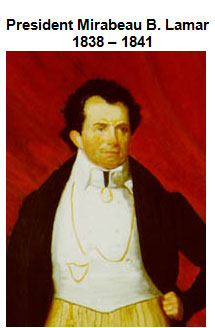
Source: Lamar-01, Texas State Library and Archives Commission
The history of Texas is filled with significant individuals who have made a lasting impact on the state. Some of those individuals made their impact during the Republic of Texas. There were individuals who shaped the Republic politically, and others made a social or economic impact on the Republic of Texas. As a result of the contributions of these and other individuals, Texas has one of the most colorful histories in the United States.
In the early years of the Republic, members of the Texas government made decisions that shaped the Republic and influenced the future of the State of Texas. Click on the images below to learn more about each individual and their impact on Texas history.

Source: Lamar-01, Texas State Library and Archives Commission
Highlights of Lamar’s Administration
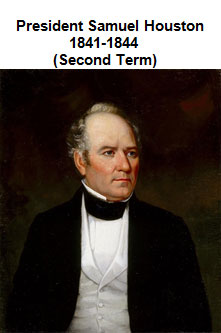
Source: Stephen F. Austin, Makism, Wikimedia
Highlights of President Houston's Second Term
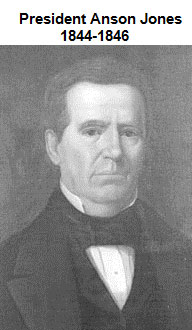
Source: Jones, Texas State Library and Archives Commission
Highlights of President Jones' Administration
While the presidents of the Republic were important, there were other individuals who did extraordinary things that impacted the Republic of Texas. These men and women also contributed to the cultural landscape of Texas.
The Texas Navy was officially established in 1836. Though it was small, the Texas Navy was active during many of the battles of the Texas Revolution. By the end of 1837, all ships in the navy were wrecked or seized in battle. The second navy was established in 1838 with the purchase of a small fleet of ships.
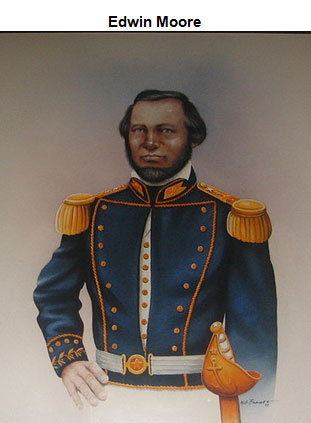
Source: Edwin Ware Moore Photo, Vasyatka1, Wikimedia
In 1839, U.S. Navy Lieutenant, Edwin Moore (pictured above) resigned from the U.S. Navy and was appointed commodore of the Texas Navy. Under Moore’s command, the Texas Navy created the first accurate navigation charts of the Gulf of Mexico. President Lamar ordered the navy into Mexican waters; Moore and the Texas Navy helped locate rebels in the Yucatan who were fighting against Mexico. Under Moore’s command, the navy successfully broke up a Mexican naval blockade near the Yucatan. The Texas Navy was recalled when President Sam Houston took office in 1841. Without support from the Houston administration, Moore paid for his men and supplies out of his own pocket.
There was constant tension between Moore and Houston. Once Moore returned to Texas, he was given a dishonorable discharge from the navy. Moore was later put on trial for charges ranging from embezzlement to murder. Moore was convicted for disobedience, a much lesser charge. This was a victorious decision for Moore.
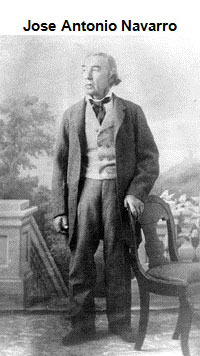
Source: Navarroportrait, Globalearth, Wikimedia
Jose Antonio Navarro was a Mexican-born Texan who participated in the Texas Revolution. Navarro was a politician in Texas during Mexican rule, as well as during the Republic of Texas. Navarro was one of three Mexican signers of the Texas Declaration of Independence. A supporter of President Lamar, Navarro was chosen by the president to participate in the Santa Fe Expedition.
On this expedition, a diverse group of Texans were sent to Santa Fe to take control of the region. The expedition was a failure; members ran out of food and water, and American Indians attacked them several times. The members of the expedition encountered Mexican troops and were taken as prisoners. The Mexican troops forced the prisoners to march from Santa Fe to Mexico City, more than 1,000 miles away.
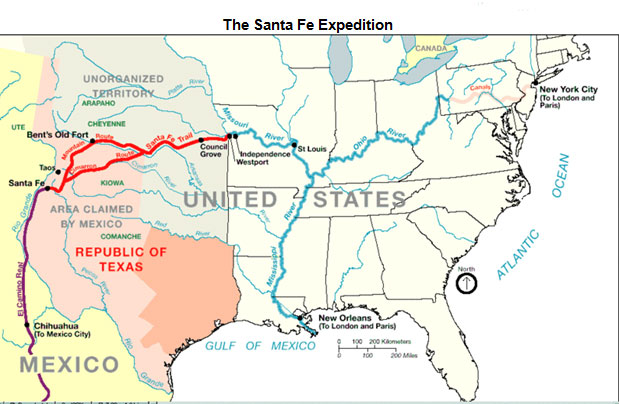
Source: 1845 trailmap, H-stt, Wikimedia
Some members of the expedition died on the march to Mexico City or in a Mexican prison. Negotiators convinced the Mexicans to release the remaining prisoners in 1842. Jose Antonio Navarro was the last prisoner to be released.
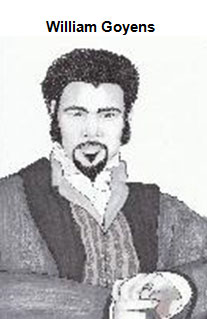
Source: William Goyens, Texas Black History Preservation Project
William Goyens was a successful African-American entrepreneur and peace negotiator who played a vital role in the Republic of Texas. Goyens moved to Texas during the Mexican National Era. He settled in Nacogdoches where he lived until his death.
Although Goyens did not have a formal education, he was a very good businessman. He was a blacksmith and owned a freight company that carried freight from Louisiana to Texas. During the Mexican National era, Goyens developed good relationships with various American-Indian groups. It was because of these relationships that he was able to negotiate peace treaties when called upon. His negotiating skills were an asset to General Sam Houston during the Texas Revolution. Houston appointed Goyens as a translator and peacekeeper between the Cherokees and Texans.
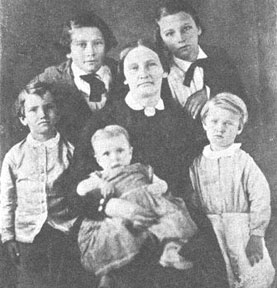
Source: Maverickmary, Texas A & M University
There were many women who have contributed to Texas in many ways. It is through Maverick’s work that Texas has a glimpse of what life was truly like during those years.
Mary Adams Maverick moved to Texas in the early years of the Republic. She kept a diary of her life during the Republic. In 1881, she published memoirs for her children and grandchildren. A collection of all of her diaries was later published as a book in 1921.
It was Maverick’s account of the Council House Fight that gave Texans a clear understanding of what transpired between the Comanche and the Texans. The Council House Fight occurred during the time of the Comanche raids in Texas. It took place in San Antonio; the Comanche came to town to negotiate a peace treaty with Texas officials. They brought with them a young Anglo-American girl whom they had held hostage.
Read an excerpt of Maverick’s account of what happened at the Council House Fight below.
A Day of Horrors
"We will according to a former agreement, keep four or five of your chiefs, whilst the others of your people go to your nation and bring all the captives, and then we will pay all you ask for them. Meanwhile, these chiefs we hold we will treat as brothers and 'not one hair of their heads shall be injured.' This we have determined, and, if you try to fight, our soldiers will shoot you down."
This being interpreted, the Comanches instantly, with one accord raised a terrific war-whoop, drew their arrows, and commenced firing with deadly effect, at the same time making efforts to break out of the council hall. The order "fire" was given by Captain Howard, and the soldiers fired into the midst of the crowd, the first volley killing several Indians and two of our own people. All soon rushed out into the public square, the civilians to procure arms, the Indians to flee, and the soldiers in pursuit. The Indians generally made for the river-they ran up Soledad, east on Commerce Street and for the bend, now known as Bowen's, southeast, below the square. Citizens and soldiers pursued and overtook them at all points, shot some swimming in the river, had desperate fights in the streets and hand to hand encounters after firearms had been exhausted. Some Indians took refuge in stone houses and fastened the doors. Not one of the sixty-five Indians escaped-thirty-three were killed and thirty-two were taken prisoners. Six Americans and one Mexican were killed and ten Americans wounded.
- Excerpt from Description of The Council House Fight, Mary A. Maverick, 1896.
Analyzing the excerpt: After reading the excerpt above, answer the following questions in your notes.
Interactive popup. Assistance may be required.
The Comanche and Texans were supposed to exchange hostages at the Council House in San Antonio.
Interactive popup. Assistance may be required.
The Texans gave the warning because the Comanche did not bring all of the hostages to trade with the Texans. The Texans wanted to make sure the hostages came back unharmed.
Interactive popup. Assistance may be required.
The casualties of the Council House Fight were as follows:
Maverick was determined to preserve the history of the Republic. As Texas cities grew, she joined groups such as the San Antonio Historical Society to promote the history of the Republic.